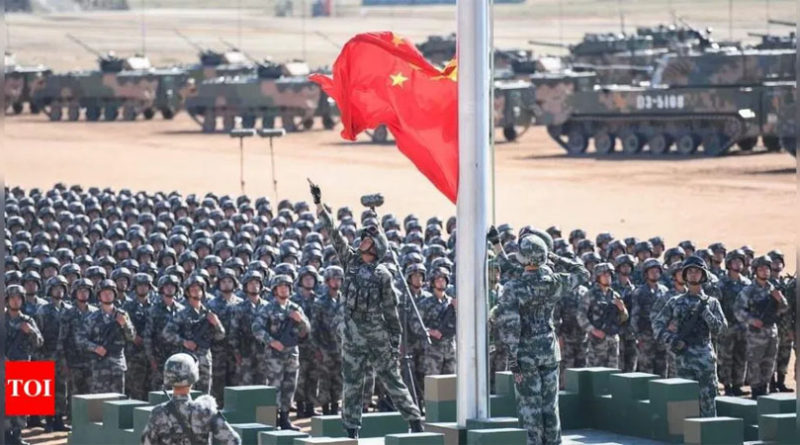China Announces 6.8% Increase In 2021 Defence Budget
05 March 2021
Announced on 5 March, China’s 2021 defence budget will increase by 6.8% in 2021 – marking an end to its recent slowdown. However, analysis from Jon Grevatt and Andrew MacDonald highlights that this does not represent a significant departure from the country’s recent military-expenditure trajectory… (Photo credit: TOI)
China’s defence budget in 2021 will increase by 6.8% to CNY1.355 trillion (USD209.4 billion), according to the Chinese government.
The expenditure – the first within China’s new five-year plan – was announced on 5 March at the opening of the annual session of the National People’s Congress (NPC) in Beijing.
The new defence budget marks the sixth year in succession when the defence budget has increased by less than 10%. However, growth in the budget is also indicative of China’s economic resilience to the effects of the Covid-19 pandemic.
China’s 2021 defence budget represents the largest growth in military spending since 2019, and is a slight increase over the 6.6% growth recorded in 2020. China’s official defence budget last year was CNY1.268 trillion, and was the lowest rate of growth recorded for many years. In 2019 China’s defence budget increased by 7.5% to CNY1.19 trillion.
The 2021 defence budget is notable because it is the first within the country’s new 14th Five Year Plan (FYP), which runs from 2021 to 2025.
According to blueprints of the 14th FYP, China’s objective during this period is to “make major strides in the modernisation of national defence and the armed forces”.
The plan is also aimed at accelerating the PLA’s transition from “mechanisation” towards “informationisation” and “intelligentisation”. This is reference to a shift from military platform modernisation towards the adoption of digital and networked systems, and the integration of ‘intelligent’ systems utilising technologies such as artificial intelligence.
What does this announcement mean for long-term Chinese military expenditure?
China’s new defence budget marks an end to its recent slowdown. However, it does not represent a significant departure from the country’s previous military-expenditure trajectory.
Like most countries, China reports its defence budget growth in nominal terms, without accounting for the effects of inflation. By this metric, there has indeed been a steady decline in rates of expansion, from a high of 12% per year in 2014 to a low of 6.6% in 2020.
However, during this period, inflation in China fluctuated considerably, and notably slower price rises from 2018 have boosted defence budget growth in real terms.
Applying this metric, China’s defence spending slowdown in fact ended in 2018 as real growth rose from the previous year’s low of 2.8% to 4.5%. This trend was reinforced in 2019 when spending grew by a real 5.8%, and since that point annual increases appear to have held steady at between 5.5% and 6.3% after inflation.
As well as its officially announced defence budget, Janes assesses that it is likely that China’s military funding is supplemented by several additional sources of funding, which, while relatively mundane, should be considered when comparing China’s allocations with those of other countries.
Janes estimates that these supplemental funds, which include payments for military pensions and benefits as well as civilian research and development activities that benefit the armed forces, are likely to equate to around CNY350 billion in 2021, or an additional 25% as compared with the announced budget. This takes total Chinese defence expenditure to just over CNY1.7 trillion, or more than USD262 billion.
Although in the short term China is expected to maintain or only gradually accelerate its relatively consistent annual budget increases in nominal terms, as the global economy begins to recover from the Covid-19 pandemic, a forecast rise in inflation is likely to limit real expansion to a degree before 2025.
At current rates of expansion, total Chinese defence spending can be expected to exceed CNY2 trillion (USD309 billion) by 2024.
This article is adapted from full analysis published to Janes subscribers
Courtesy: Janes

